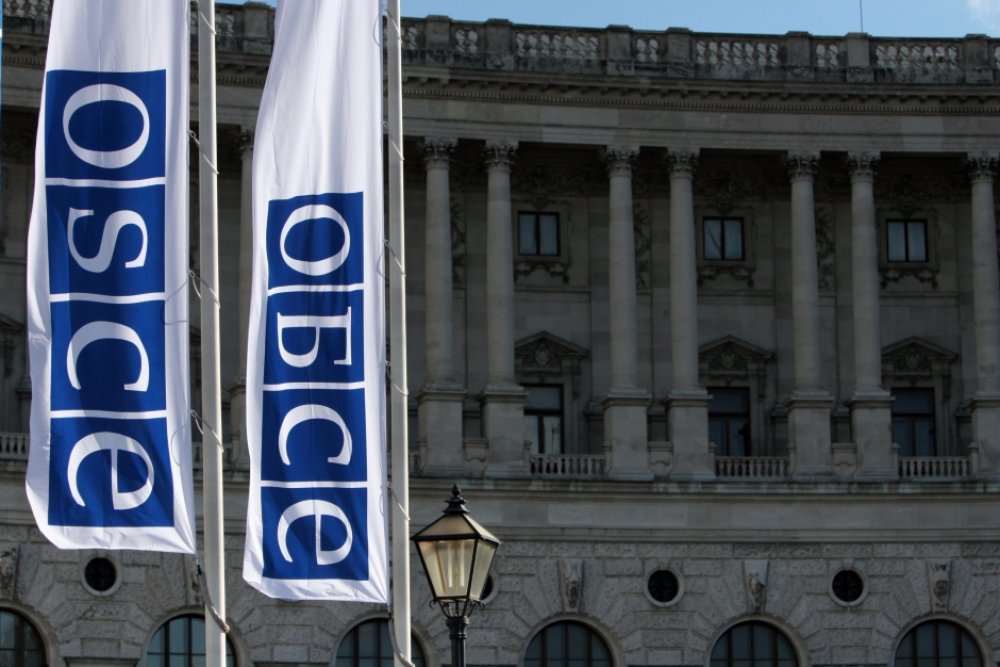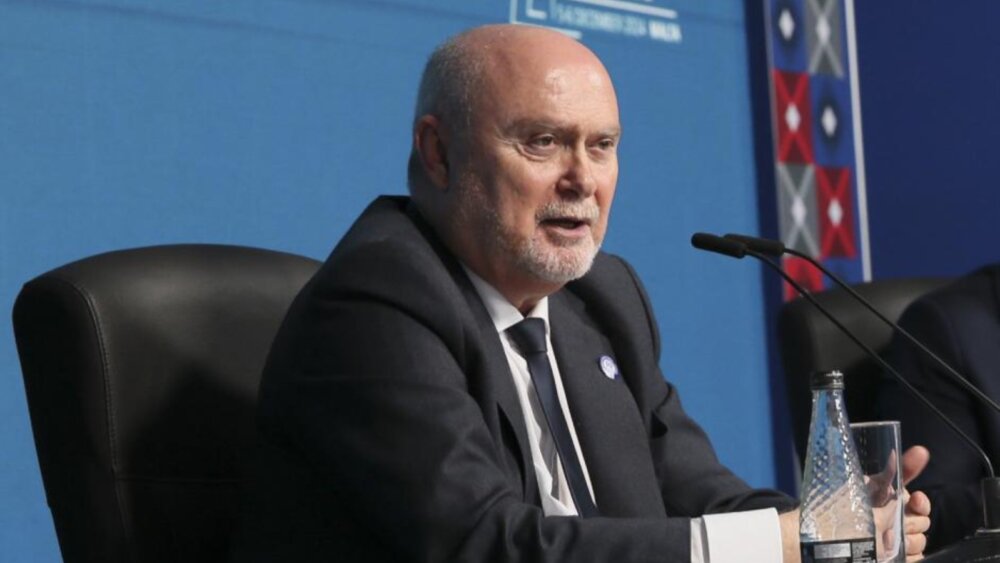rawf8/shutterstock

What role for the OSCE in Nagorno-Karabakh?
The weeks since the Russian-brokered ceasefire, that ended the six-week war between Armenia and Azerbaijan over the enclave of Nagorno-Karabakh, have been rife with speculation about its geopolitical and regional impact.
These debates have been taking place in an environment in which civilian arrangements on the ground are still fluid and actors interpret aspects of the ceasefire agreement in different ways. The outcome of the 11 January meeting between the Armenian, Azerbaijani and Russian presidents, despite some agreements on the reestablishment of transport links, has reinforced the impression that a number of civilian arrangements remain unresolved.
At the same time, several international organizations have expressed their readiness to contribute to various aspects of peacebuilding in the region, should respective political agreements be found.
Situation remains unstable
The six-week war has resulted in new realities on the ground. There are now three distinct types of areas in and around Nagorno-Karabakh (NK). Firstly, there is the remaining part of the former “Republic of Artsakh”, where security is guaranteed by Russian peacekeepers and which is linked to Armenia via a transport corridor. This “rump-NK” continues to be inhabited by Armenians, and those displaced return in great numbers. While the territory is “under the protection” of the Russian Federation, its legal status remains unclear.
Secondly, there are the parts of the former “Republic of Artsakh” surrounding the city of Shusha (called Shushi by Armenians) that have been repossessed by Azerbaijan and reintegrated into its jurisdiction. It is still possible that some Armenians remain there and it is likely that Azeri Internally Displaced Persons (IDPs) will choose to return. Finally, there are the former “occupied territories”, now reintegrated into Azerbaijan. These regions remain largely empty, but Azeri IDPs will attempt to return once security is guaranteed and minimal infrastructure is put in place.
It is obvious that these arrangements are not stable and have a potential to compromise both the local and the regional security situation. Managing the challenges of return of an unknown number of displaced people to areas that are completely destroyed and devoid of infrastructure will likely go beyond the capacity of local actors.
The attempt of Azeri IDPs to return to areas still inhabited by Armenians will present another set of unique challenges. Local actors will also have difficulties establishing the necessary connectivity and dialogue between areas under the control of different regional actors. In addition, they will find it hard to forge even the minimal regional cooperation needed for fostering economic development and sustainable livelihoods.
Is there a political opening?
Any type of international activity or presence on the ground would need to be embraced and supported by Russia, Armenia and Azerbaijan, with Turkey being an additional factor. In the given context, Azerbaijan would have most to gain from international involvement. On the ground, an international presence could help lighten the burden presented by the reintegration of repossessed areas.
This could happen through the provision of assistance to returnees, monitoring of the security situation and the reconstruction of infrastructure and international activities to create opportunities for economic subsistence. In terms of regional politics, Azerbaijan will most probably be content if the new Russian presence on its territory somehow finds a counterweight, even if only civilian and “light”.
Armenia will at this point likely support any type of international presence on the ground, particularly inside “rump-NK”. Besides helping to manage the difficult humanitarian and economic situation, any such presence could – in Armenia’s eyes – supply an additional deterrent against further military action by Azerbaijan.
Russian assent to any type of international presence on the ground is of critical significance. For this to happen, the presence needs to have a light footprint and be undertaken on behalf of an organization that does not encounter instinctive distrust by Russia.
Two additional factors might come to bear: Russia could see an international presence on the territories under Azerbaijani control as rebalancing an outsized Turkish influence. Another factor motivating Moscow to support an international presence in this region could be its intention to signal some readiness for cooperation to the new Biden administration.
Who could act?
The fact that Russia has a de-facto veto over any international presence in the region limits the options. The OSCE, known for flexibility, a light footprint, and for a strong Russian influence over its functioning, would need to play a leading role in this regard. Where human rights topics, such as return of IDPs and refugees are concerned, the Organization could act even quicker and more flexibly with a non-permanent presence of the OSCE/ODIHR.
For example, the ODIHR could design a comprehensive project for assistance to the areas in and around Nagorno-Karabakh. Such a limited effort could spearhead other initiatives that take longer to develop, such as an effort at comprehensive human rights monitoring, initiatives to support rule of law institutions, or efforts at fostering soft regionalism and economic connectivity.
The EU, on the other hand, currently maintains a limited political role via an EU Special Representative responsible for the South Caucasus, and continues to cooperate with Armenia and Azerbaijan in the framework of its Eastern Partnership. It is also financing two multi-million Euro projects meant to foster dialogue and peacebuilding in the region.
Both have been designed before the recent war and are now being adjusted to account for a fundamentally changed landscape. The EU could use these assets, plus funds from its Foreign Policy Instrument (FPI) as well as humanitarian funds, to cooperate with the OSCE and others for a rapid and comprehensive response to identified regional needs.
What can be done?
Initial tasks of such a presence would need to include activities in all three OSCE security dimensions. These tasks will have to comprise the monitoring of the security and human rights situation with a specific focus on returnees and receiving local communities. This should be complemented by a role in the facilitation of the delivery of actual assistance to communities on the ground. Furthermore, a facility for the establishment of dialogue between remaining (or returning) Armenians, the new Azerbaijani administration and Azeri returnees will be crucial to ensure stability on the ground.
An OSCE presence on the ground could also be involved in identifying opportunities for small-scale regional economic cooperation to create economic opportunities. Inside “rump NK”, the role of an OSCE human dimension presence at first would realistically have to be limited to the facilitation of humanitarian aid and, possibly, a civilian monitoring of the human rights situation. Yet, in order to maintain connectivity and communication, it is crucial that any presence in Azerbaijani-controlled areas is accompanied by a limited liaison function in both Baku and Stepanakert.
Since the beginning of this year, the OSCE is under new leadership, with a new Chairperson-in-Office, a new Secretary General and a new Director of ODIHR. The Biden administration is about to bring a new appreciation for cooperative security to the international arena. The situation in and around Nagorno-Karabakh is currently peaceful, but far from stable, with all actors weighing their options.
If the OSCE could bring a proposal for comprehensive peacebuilding action in the region at this point, it could substantially contribute to regional stability, cooperation and human security in the South Caucasus. This window of opportunity may be open now, but is unlikely to remain so for an extended period of time.
Wolfgang Sporrer is a Fellow for International Conflict Management at the Hertie School. Until 2020, he was the Head of Human Dimension at the OSCE Special Monitoring Mission to Ukraine. Before that he worked in Baku, Azerbaijan, where he was the Head of the Europa House (Office of the European Commission) and the Director of the Representative Office of the oil and gas company OMV. He also has experience as a political Adviser for the OSCE as well as the EU in South Eastern Europe, Ukraine and the Russian Federation.
Bernhard Knoll-Tudor is Director of Executive Education and adjunct faculty at the Hertie School in Berlin. Prior to his appointment, he directed the Global Policy Academy at Central European University, Budapest, and worked for eight years for the OSCE where he was involved in policy design and public relations. He has also held positions at the EU Monitoring Mission in Bosnia and Herzegovina as well as with the Austrian Ministry of Foreign Affairs. His latest comments on Nagorno Karabakh were published in EJIL*Talk! and EURACTIV.



Comments
* Your email address will not be published